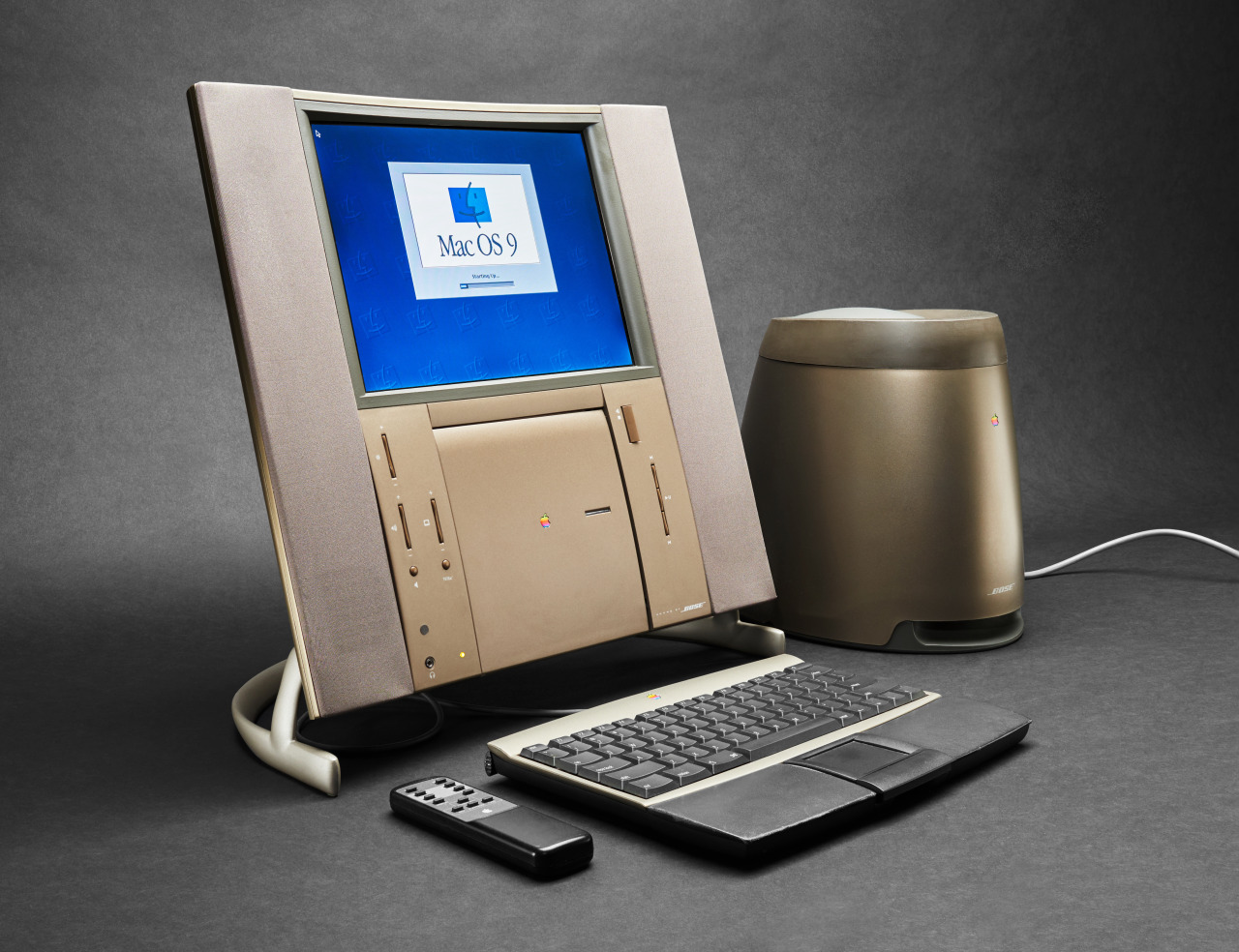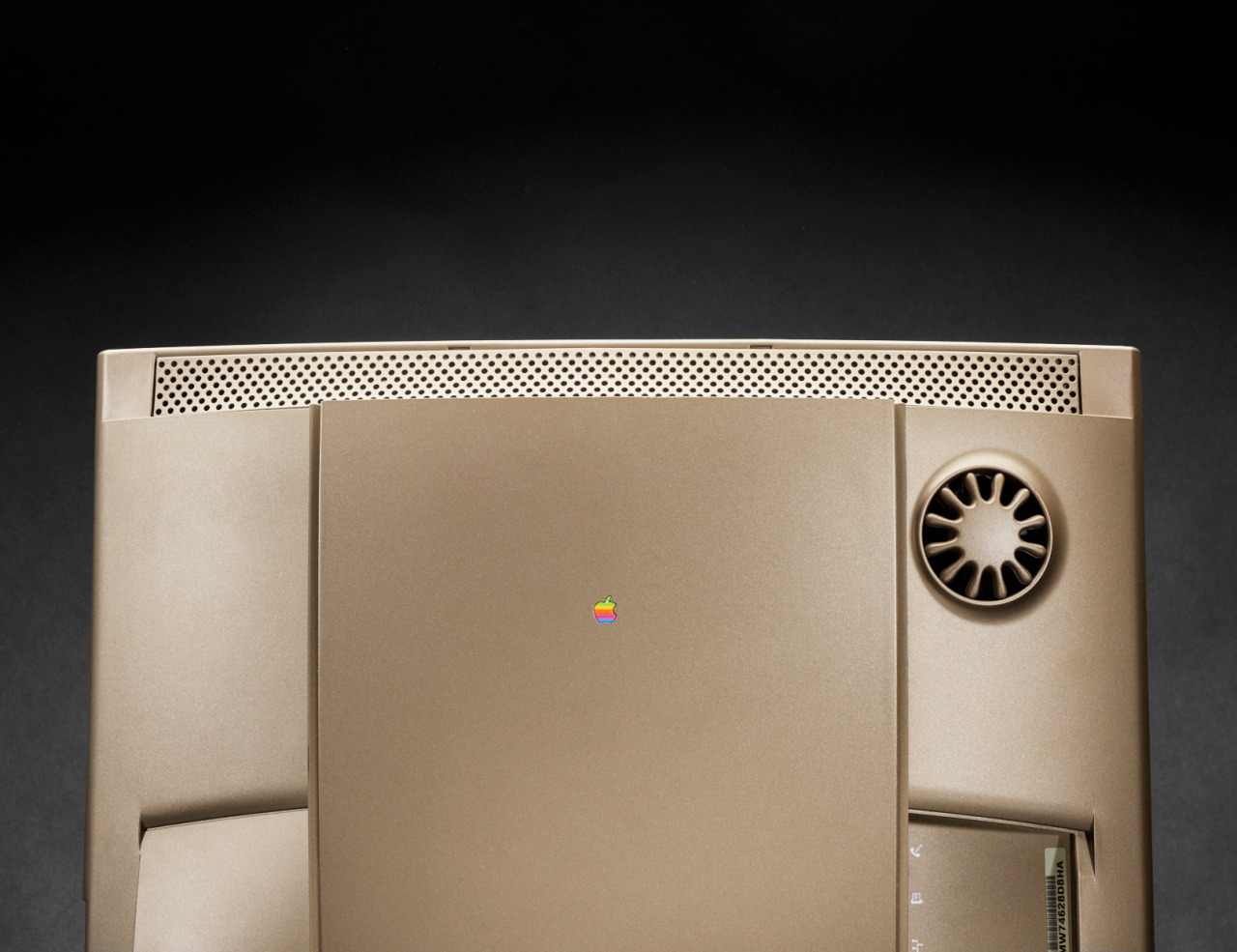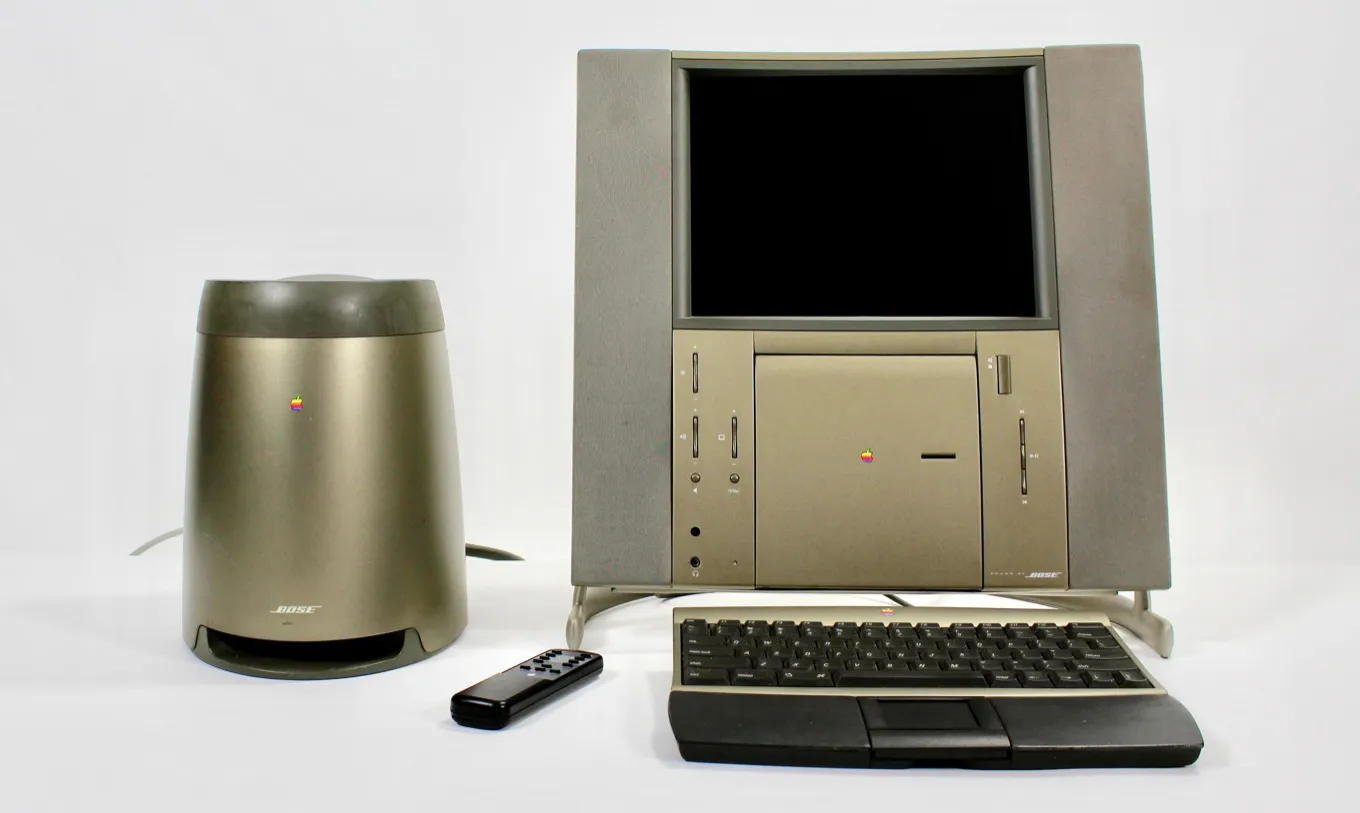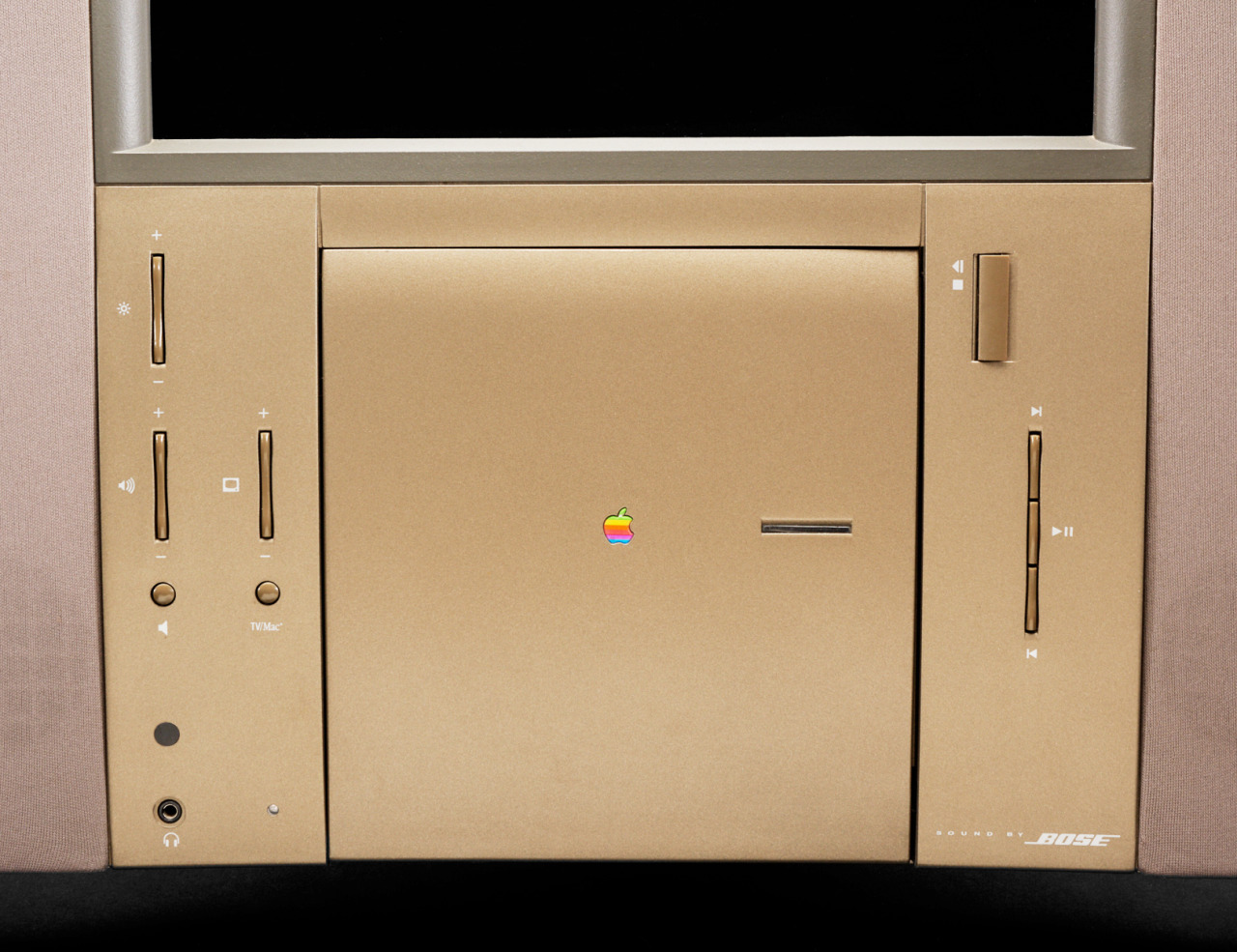Apple’s 20th Anniversary Macintosh: What Went Wrong?
- Ever wondered why Apple’s exclusive 20th Anniversary Mac didn’t catch on?
- Let's uncover the unexpected flaws that doomed the TAM’s success.
- Discover how this pricey machine still influences Apple’s designs today.
In 1997, Apple teetered on the brink of collapse. Yet, in a bid to celebrate its 20th anniversary, the company introduced the Twentieth Anniversary Macintosh (TAM) — a machine that would become both a symbol of innovation and a cautionary tale in Apple's storied history. Photo via Adafruit // Apple's 20th Anniversary Macintosh, a computer that was described as a “Ferrari-on-a-desktop” by the New York Times.
Photo via Adafruit // Apple's 20th Anniversary Macintosh, a computer that was described as a “Ferrari-on-a-desktop” by the New York Times.
A Glimpse into the Future
Released on March 20, 1997, the TAM was Apple’s ambitious tribute to its two-decade legacy. Priced at a staggering $7,499 ($14,750 in today's dollars), it targeted the executive market with features that went beyond mere computing. The New York Times aptly described it as a “Ferrari-on-a-desktop,” highlighting its luxurious and avant-garde design.
Specs
At its core, the TAM was an all-in-one PC, a precursor to what would later become the iconic iMac. Designed by a young Jony Ive, who would later become Apple's creative visionary, the TAM broke traditional computing molds. It housed a 250 MHz PowerPC 603e processor, a 12.1-inch active matrix LCD, and an ATI 3D Rage II video chipset. Additional features included a 2GB ATA hard drive, a TV/FM tuner, and a bespoke Bose sound system with “Jewel” speakers and a subwoofer.
 Photo via Adafruit // Despite its commercial failure at the time, the Apple TAM is still looked back upon fondly by Apple enthusiasts.
Photo via Adafruit // Despite its commercial failure at the time, the Apple TAM is still looked back upon fondly by Apple enthusiasts.
Despite its innovative design, the TAM was not without flaws. A thick “umbilical” cable connecting the base unit to the head unit caused a minor but notable “speaker buzz” in some models. Apple’s engineers attempted fixes, but the issue persisted in a small percentage of machines.
Consumer Reception
Apple manufactured 12,000 TAMs, with only 11,601 hitting the markets across five countries: the USA, Japan, France, Germany, and the UK. Both Steve Jobs and Steve Wozniak were among the few to own a TAM, symbolizing its exclusivity.
Gil Amelio, Apple’s CEO at the time, lauded the TAM as a celebration of Apple’s two decades of innovation. “It’s about the most beautiful thing we’ve ever built. It’s the Twentieth Anniversary Macintosh,” Amelio proclaimed during its launch.
However, the TAM’s high price point and limited availability hampered its commercial success. Apple’s decision to use many off-the-shelf components to speed up development did little to offset the hefty cost, making it inaccessible to the average consumer. Photo via Six Colors // From the front: Apple's 20th Anniversary Macintosh and accessories.
Photo via Six Colors // From the front: Apple's 20th Anniversary Macintosh and accessories.
The Downfall
Why TAM Failed
Several factors contributed to the TAM’s lackluster performance in the market:
- Exorbitant Pricing: Initially priced at $7,499, the TAM was aimed at a niche market. Midway through its lifecycle, Apple slashed the price to around $3,500, and ultimately discontinued it at $1,995. Customers who had paid full price felt alienated, leading Apple to offer free high-end PowerBooks as compensation.
- Overcomplicated Features: While the TAM boasted impressive specifications, many of its features, such as the TV tuner and FM radio, were deemed unnecessary by consumers. The focus on an all-in-one design resulted in a bulky machine that contrasted sharply with the sleekness that would later define Apple’s products.
- Steve Jobs’ Return: In 1997, Steve Jobs returned to Apple and initiated sweeping changes. He viewed the TAM as a representation of everything wrong at Apple during that period. Under his leadership, the TAM was swiftly discontinued, and remaining stock was heavily discounted, signaling a clear pivot away from the extravagant design philosophy it embodied.
 Photo via Adafruit // Pictured: The front buttons and interface of Apple's famous 20th Anniversary Macintosh.
Photo via Adafruit // Pictured: The front buttons and interface of Apple's famous 20th Anniversary Macintosh.
Legacy of the Twentieth Anniversary Macintosh
Despite its commercial failure, the TAM left an indelible mark on Apple’s design ethos. Many of its innovative features found their way into future Apple products:
- All-in-One Design: The concept of integrating the computer components within the monitor was a precursor to the iMac’s success.
- External Power Supplies: Later models like the Power Mac G4 Cube and Mac Mini adopted the external power supply design.
- Premium Sound Systems: Collaborations with Bose, and later Harman Kardon, for high-quality sound systems became a staple in Apple’s offerings.
Today, the TAM is a coveted collector’s item, often fetching prices upwards of US$1,000-$3,200 for complete working models. Its unique design and limited production run have cemented its status as a "holy grail" among Macintosh enthusiasts.
Final Thoughts
The TAM’s story is a testament to Apple’s willingness to take risks, even when the odds are against them. While the TAM did not achieve commercial success, it paved the way for future innovations that would redefine personal computing. As Apple continues to evolve, the lessons learned from the TAM era remain a crucial part of its legacy, reminding us that even the boldest endeavors can lead to both failure and triumph.
Recommended by the editors:
Thank you for visiting Apple Scoop! As a dedicated independent news organization, we strive to deliver the latest updates and in-depth journalism on everything Apple. Have insights or thoughts to share? Drop a comment below—our team actively engages with and responds to our community. Return to the home page.Published to Apple Scoop on 7th December, 2024.
No password required
A confirmation request will be delivered to the email address you provide. Once confirmed, your comment will be published. It's as simple as two clicks.
Your email address will not be published publicly. Additionally, we will not send you marketing emails unless you opt-in.